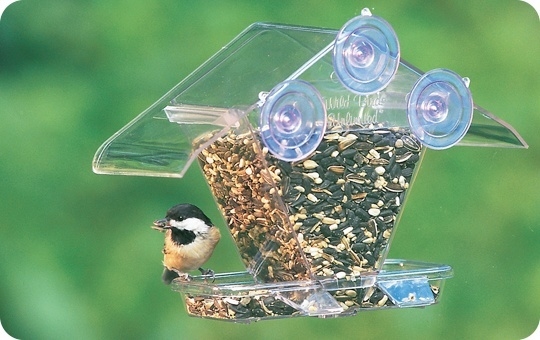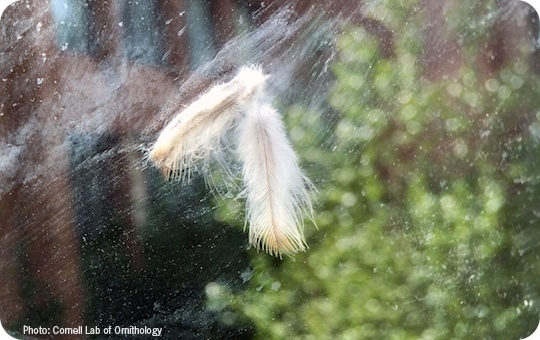Reduce Window Strikes
Ever wonder why birds seem to throw themselves at your window?
Birds such as cardinals and robins will dash repeatedly at their reflections in windows. Such actions are usually because the individual bird, usually a male, mistakenly perceives another bird in the reflection of the window. It is territorial behavior for the bird to fight off the ‘intruder”. This behavior, if continued over a period of weeks or even an entire season, can be annoying to people, but is usually not fatal to the bird. On the other hand, when a bird strikes a window in free-flight, it does so with such velocity that the results are significantly more serious.
Sometimes the bird is merely stunned or sustains superficial injuries from which it may recover, but in over half of all recorded incidents the impact results in death. This is most common during spring and fall migration, but can happen at other times of the year. Birds cannot readily distinguish the presence of a pane of transparent glass from an unobstructed space or passageway. Glass will reflect the most when it is darker inside than it is outside.
Many people are unaware that birds are being killed at their windows because the victims are small, frequently fall behind shrubbery, and more often than not are eaten by predators. Some birds bang into windows because they think they see another bird in their territory, some birds fly into windows because they don’t see the window. Other birds fly into windows because they are being chased by predators. Whatever the reason, you can make your windows safer.
You can make your windows safer with one or more of the following steps: 
Set up a window feeder. It will help keep the birds safe from striking the window and provide close views of them feeding.
If your feeding station is in the direct vicinity of a window, move it to within three feet of the window. When the birds ‘flee’ the feeder area, they will not have built up enough speed to injure themselves against the window. The "safe zone" for feeders is 3-feet or closer to a window, or 10-feet or father.
Window screens are a great deterrent. If your windows don’t have screens, there are some netting options you can purchase to install over the top of your windows to keep birds from injuring themselves.
Decals, including cutouts of hawk silhouettes, and stained-glass decorations are moderately successful. Decals that reflect UV light are also a great option as they catch the birds attention.
Hanging vertical exterior tape stripes across the window at 4 inches (10 cm) intervals can be a good deterrent; especially, if they are a UV reflective or bright Mylar type of ribbon.
Interior vertical blinds with the slats half open will make the window more visible and cut down on some bird casualties.
Windows can be soaped on the outside to make it more visible to the birds; although, this obviously impairs your view of the birds. This is a great technique when birds are attacking their reflection.
Shade trees planted outside the window should cut down on some of the reflection and help the birds avoid it.


